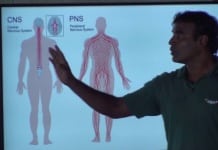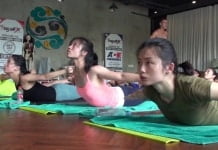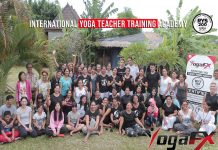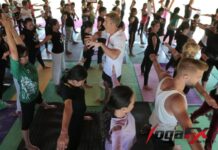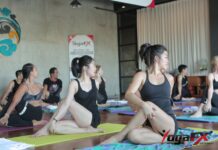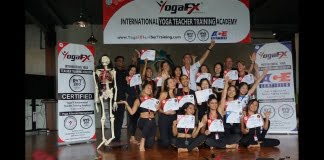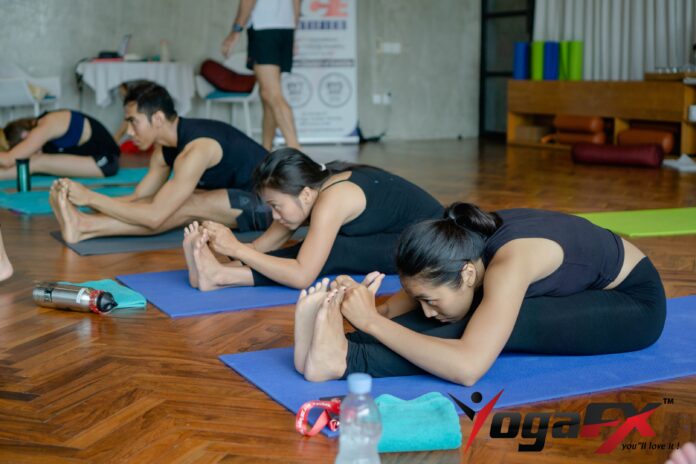
Welcome to the complete guide to 26 and 2 Yoga Poses, a dynamic and transformative practice that combines 26 postures and 2 breathing exercises. This guide aims to provide you with a comprehensive understanding of this specific style of yoga, commonly known as hot yoga or Bikram yoga. Whether you’re a seasoned practitioner or new to this practice, this guide will serve as a valuable resource to deepen your understanding and enhance your experience. Let’s dive into the world of 26 and 2 Yoga and explore the transformative power it holds.
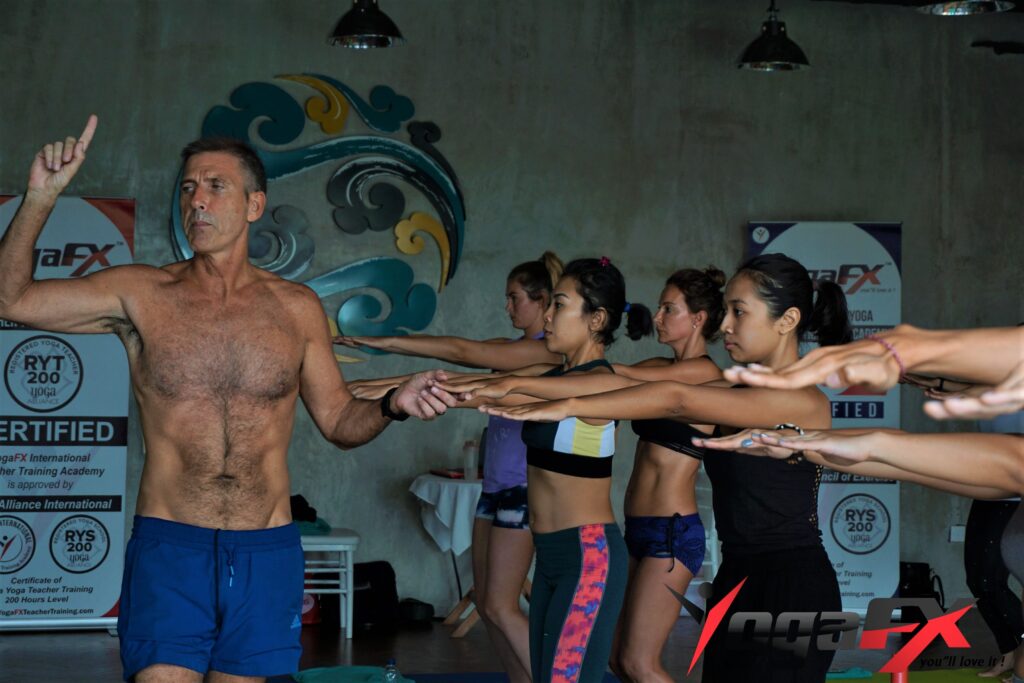
What Is 26 and 2 Yoga?
26 and 2 Yoga is a Hatha yoga sequence popularized by Bikram Choudhury, originally known as Bikram Yoga and now often referred to as Hot Yoga. What makes 26 and 2 unique is its consistent structure: 26 specific postures and 2 breathing exercises (pranayama), practiced in the same order every time.
Unlike other yoga styles that vary from class to class, 26 and 2 allows students to track their progress more clearly. The class can be done in different durations: 30, 60, or 90 minutes, typically in a heated room to enhance the benefits.
When You Accept Your “Now Situation” You Will Transform Into A More Complete Humble Simple Spirit
Benefits of Practicing 26 and 2 Yoga Poses
The practice of 26 and 2 Yoga offers a wide range of benefits for both the body and mind. Some of the notable benefits include:
Physical Benefits:
The series of poses in 26 and 2 Yoga targets various muscle groups, promoting strength, flexibility, and balance. The heat helps to warm up the muscles, allowing for deeper stretches and reducing the risk of injury. The practice also improves posture, increases stamina, and enhances overall body awareness.
Mental Benefits:
The intense focus required during the practice of 26 and 2 Yoga helps to quiet the mind and cultivate mindfulness. The heat and challenging nature of the practice also teach practitioners to stay present, fostering a sense of mental resilience and discipline. Regular practice can reduce stress, anxiety, and improve mental clarity.
Detoxification and Improved Circulation:
The heat and intense physical activity in 26 and 2 Yoga stimulate the body’s natural detoxification process, promoting the elimination of toxins through sweat. The increased circulation improves oxygen and nutrient delivery to the cells, enhancing overall health and vitality.

Detailed Guide to the 26 Poses
Below is a breakdown of the 26 and 2 Yoga sequence. Each pose includes its Sanskrit name, a brief description of how the pose looks, and its benefits.
▸Standing Deep Breathing Pose (Pranayama Series)
Performed with hands interlaced under the chin, this pose involves deep inhalations and exhalations while lifting and lowering the elbows. It opens the lungs, prepares the body for practice, and increases mental focus.
▸Half Moon Pose (Ardha Chandrasana)
Standing with feet together, arms overhead, the body bends side to side. It improves flexibility in the spine and strengthens the core and obliques.
▸Awkward Pose (Utkatasana)
Done in three parts, the knees bend like sitting in a chair, then rise onto toes, and finally balance in a tight squat. It builds strength in the thighs, calves, and improves balance.
▸Eagle Pose (Garudasana)
Wrapping one leg over the other and arms in front, this pose improves flexibility in major joints and enhances focus and circulation.
▸Standing Head to Knee Pose (Dandayamana Janushirasana)
One leg extended forward, hands holding the foot, forehead to knee. Builds core strength, balance, and mental determination.
▸Standing Bow Pose (Dandayamana Dhanurasana)
One hand grabs the ankle while the other arm reaches forward, creating a bow shape. Enhances flexibility, balance, and spine strength.
▸Balancing Stick Pose (Tuladandasana)
With arms and one leg stretched forward and backward like a “T”, this pose boosts cardiovascular health and strengthens the body line.
▸Standing Separate Leg Stretching Pose (Dandayamana Bibhaktapada Paschimottanasana)
Feet wide apart, bend forward to touch the floor. It stretches the hamstrings and spine, aiding digestion.
▸Triangle Pose (Trikonasana)
Wide-leg stance with one hand reaching the floor and the other up. Opens hips and chest, strengthens legs, and stimulates digestion.
▸Standing Separate Leg Head to Knee Pose (Dandayamana Bibhaktapada Janushirasana)
Forward bend over one extended leg. It massages internal organs and strengthens abdominal muscles.
▸Tree Pose (Tadasana)
Foot placed on the opposite thigh, hands in prayer at the chest. Enhances balance and strengthens ankles and knees.
▸Toe Stand Pose (Padangustasana)
From Tree Pose, the body lowers into a squat on the toes. Builds balance, mental strength, and strengthens lower legs.
▸Dead Body Pose (Savasana)
Lying flat on the back, arms and legs relaxed. Promotes rest, recovery, and mental clarity.
▸Wind-Removing Pose (Pavanamuktasana)
One or both knees pulled to the chest. Improves digestion and relieves lower back tension.
▸Sit-Up Pose
From Savasana, a sharp inhale with arms overhead and exhale as the body folds forward. Energizes the body and strengthens the core.
▸Cobra Pose (Bhujangasana)
Lying on the stomach, hands under shoulders, chest lifted. Strengthens the spine and opens the chest.
▸Locust Pose (Salabhasana)
Arms under the body, legs lift off the ground one at a time, then both. Strengthens the lower back and glutes.
▸Full Locust Pose (Poorna Salabhasana)
Arms stretched out like airplane wings, chest and legs lifted. Improves posture and back strength.
▸Bow Pose (Dhanurasana)
Grab ankles and lift chest and thighs off the floor. Opens the chest and shoulders, strengthens back and legs.
▸Fixed Firm Pose (Supta Vajrasana)
Knees together, feet outside the hips, lay back on the floor. Increases knee and ankle flexibility, aids digestion.
▸Half Tortoise Pose (Ardha Kurmasana)
Kneeling with arms stretched forward on the floor. Calms the mind and stretches the spine.
▸Camel Pose (Ustrasana)
Kneeling backbend with hands on heels. Opens the heart and stretches the entire front body.
▸Rabbit Pose (Sasangasana)
Crown of head on floor, hands grabbing heels, lift hips. Stretches the spine and boosts immune function.
▸Head to Knee Pose (Janushirasana with Paschimottanasana)
Seated, one leg extended, the forehead touches the knee. Stimulates kidneys and improves flexibility.
▸Spine Twisting Pose (Ardha Matsyendrasana)
Seated twist with one leg over the other. Increases spinal flexibility and aids digestion.
▸Blowing in Firm Pose (Kapalbhati in Vajrasana)
Seated breathing exercise with forceful exhales. Detoxifies and strengthens abdominal muscles.
The Importance of Proper Breathing Techniques
In 26 and 2 Yoga, proper breathing techniques are fundamental to the practice. The two breathing exercises, known as Pranayama and Kapalbhati, help to oxygenate the body, release tension, and enhance the overall benefits of the poses. Mindful and controlled breathing also promotes relaxation and focus during the practice.
Tips for a Successful 26 and 2 Yoga Practice
To make the most of your 26 and 2 Yoga practice, consider the following tips:
1. Preparing for the Practice:
Hydrate well before the class, wear comfortable and breathable clothing, and bring a towel and water bottle to stay hydrated throughout the practice.
2. Listen to Your Body:
Pay attention to your body’s signals and respect its limits. Don’t push yourself beyond what feels comfortable. Take breaks when needed and modify poses as necessary.
3. Develop a Consistent Practice Routine:
Consistency is key in reaping the benefits of 26 and 2 Yoga. Aim to attend classes regularly to maintain progress and deepen your practice.
Modifications and Variations for Different Levels
Modifications and variations are available for practitioners of all levels. Beginners or those with physical limitations can work with their instructors to find adaptations that suit their needs. Advanced practitioners can explore deeper variations and progressions to continue challenging themselves.
Common Challenges and How to Overcome Them
The heat and intensity of 26 and 2 Yoga can present challenges for some practitioners. It’s important to stay hydrated, take breaks as needed, and listen to your body. Building up endurance gradually and practicing regularly will help overcome initial difficulties.
Practicing 26 and 2 Yoga Poses Safely
To practice 26 and 2 Yoga safely, it’s crucial to warm up properly, follow correct alignment cues, and avoid common mistakes that may lead to injury. Work with a qualified instructor who can guide you and provide adjustments when necessary.
Conclusion
Practicing 26 and 2 Yoga consistently can transform your body and mind. The discipline, structure, and clarity it offers are why so many students around the world fall in love with this method. If you’re looking to deepen your understanding, improve your practice, or even become a certified instructor, there’s no better time than now to start your journey.
Join our transformative 26 and 2 yoga teacher training and
take the next step toward mastery, connection, and a life-changing experience on and off the mat.








